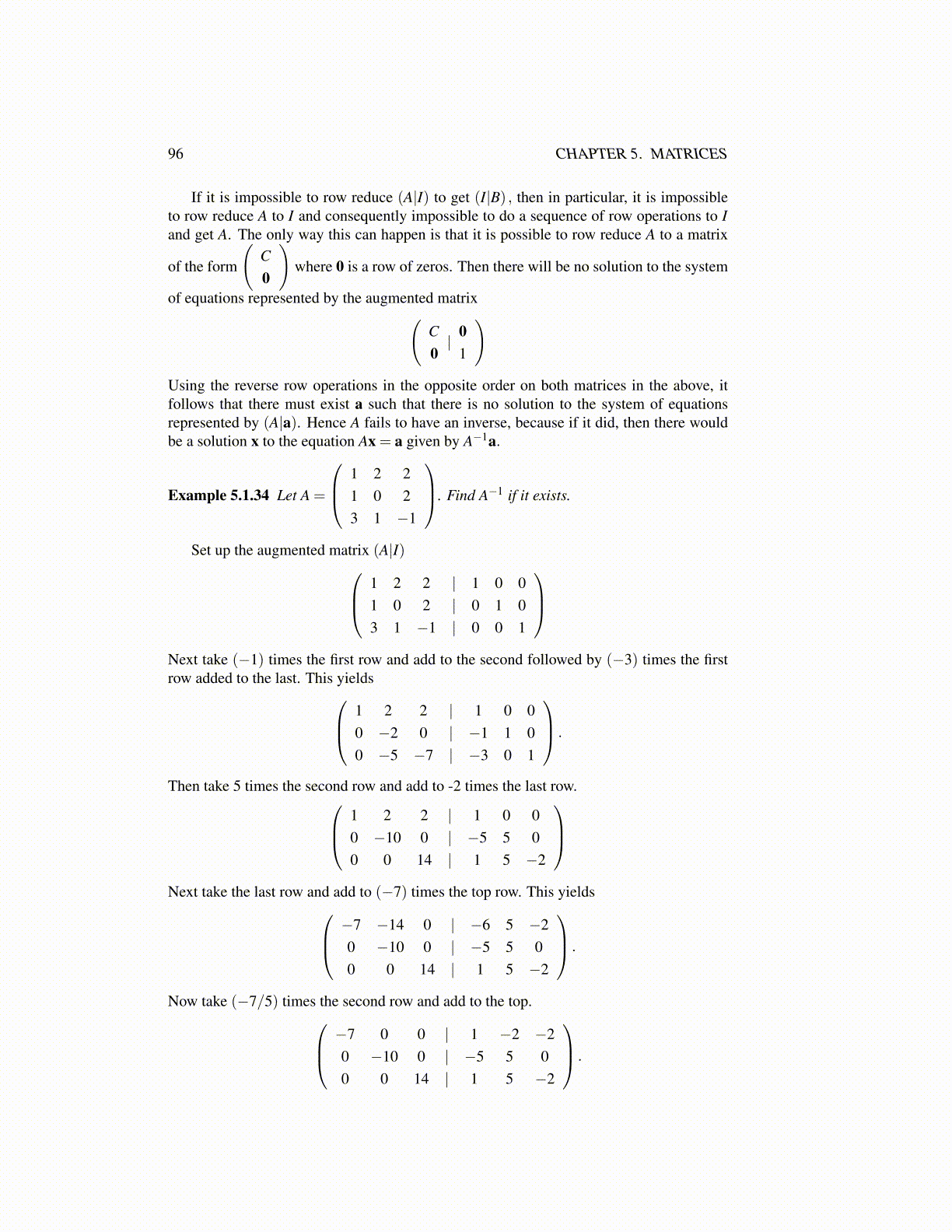
96 CHAPTER 5. MATRICES
If it is impossible to row reduce (A|I) to get (I|B) , then in particular, it is impossibleto row reduce A to I and consequently impossible to do a sequence of row operations to Iand get A. The only way this can happen is that it is possible to row reduce A to a matrix
of the form
(C0
)where 0 is a row of zeros. Then there will be no solution to the system
of equations represented by the augmented matrix(C0| 0
1
)Using the reverse row operations in the opposite order on both matrices in the above, itfollows that there must exist a such that there is no solution to the system of equationsrepresented by (A|a). Hence A fails to have an inverse, because if it did, then there wouldbe a solution x to the equation Ax = a given by A−1a.
Example 5.1.34 Let A =
1 2 21 0 23 1 −1
. Find A−1 if it exists.
Set up the augmented matrix (A|I) 1 2 2 | 1 0 01 0 2 | 0 1 03 1 −1 | 0 0 1
Next take (−1) times the first row and add to the second followed by (−3) times the firstrow added to the last. This yields 1 2 2 | 1 0 0
0 −2 0 | −1 1 00 −5 −7 | −3 0 1
.
Then take 5 times the second row and add to -2 times the last row. 1 2 2 | 1 0 00 −10 0 | −5 5 00 0 14 | 1 5 −2
Next take the last row and add to (−7) times the top row. This yields −7 −14 0 | −6 5 −2
0 −10 0 | −5 5 00 0 14 | 1 5 −2
.
Now take (−7/5) times the second row and add to the top. −7 0 0 | 1 −2 −20 −10 0 | −5 5 00 0 14 | 1 5 −2
.